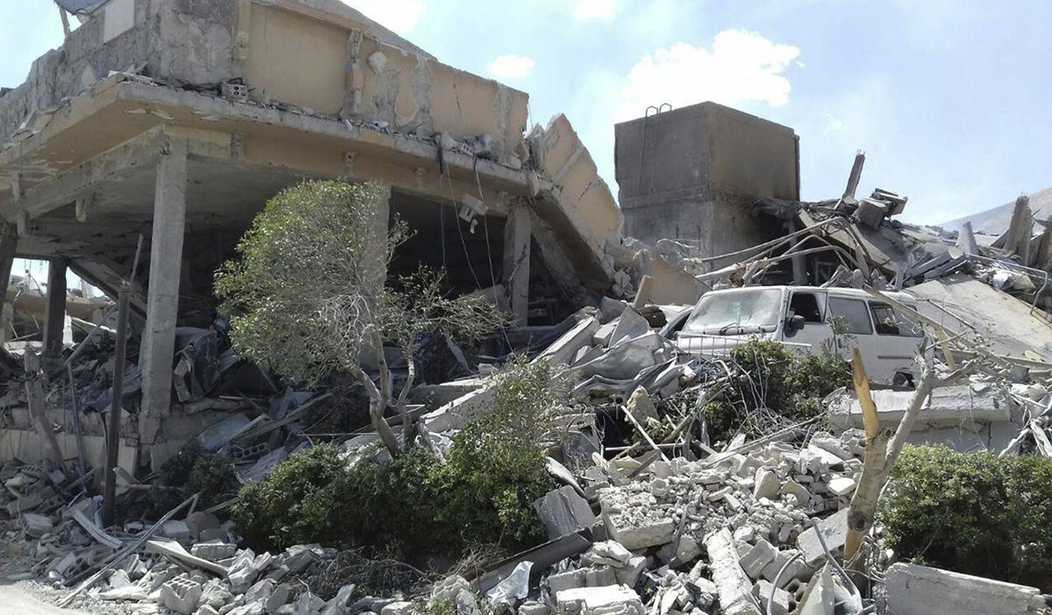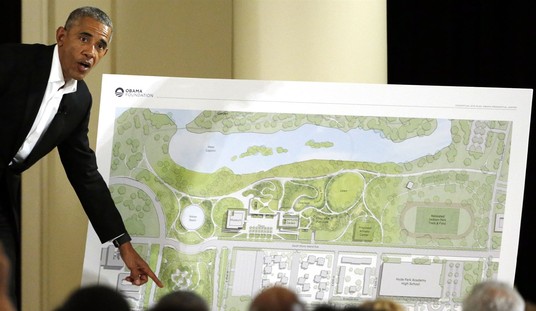With air strikes on Syria’s chemical weapons facilities, carried out jointly with Britain and France, America has done the right thing.
Leading from in front, President Trump is finally redrawing the red line that President Obama erased in 2013. Whatever the threats and criticisms that will surely follow, the world will be safer for it. The vital message is that America is no longer the hamstrung giant of the Obama era. Tyrants such as Syria’s Bashar al-Assad, and his patrons in Moscow and Tehran, have been served notice that it would be unwise to continue to assume that America will waffle, appease or simply retreat while they take upon themselves the shaping — to monstrous effect — of the 21st-century world order. This message is also likely to resonate in Beijing (which has reportedly been planning live-fire naval exercises next week in the Taiwan Strait) and Pyongyang (with its nuclear missile projects).
The immediate aim of the U.S.-led air strikes was to end the chemical weapons attacks that Syria’s Assad regime has continued to inflict on its own people — despite Assad’s promises in 2013 to surrender his chemical weapons, and Russia’s promise to ensure Assad did so. On Friday, speaking at a meeting of the United Nations Security Council, Ambassador Nikki Haley charged that by U.S. estimates, “Assad has used chemical weapons in the Syrian war at least 50 times” — some of these attacks within the past year, including the gas attack that killed dozens last weekend in the Syrian city of Douma.
There’s room for debate about whether it is America’s responsibility, on humanitarian grounds, to stop such atrocities. But whatever your views on protecting children in a far-off land from the hideous effects of chemical weapons, there is a larger, strategic reason for trying to stop Assad. Syria, with its liberal use of chemical weapons, has been setting a horrific precedent — repeatedly violating the Chemical Weapons Convention to which Damascus acceded in 2013, and eroding the longstanding international taboo against chemical warfare. This is dangerous way beyond Syria. As Haley told the UN Security Council: “All nations and all people will be harmed if we allow Assad to normalize the use of chemical weapons.”
In theory, the United Nations was supposed to prevent this, ensuring in tandem with the Organization for the Prohibition of Chemical Weapons that Assad would give up all his chemical weapons — with the specific oversight and guarantees of Russia, under a deal cut in 2013 by Obama and Putin. As I explained in an article earlier this week for The Hill, the UN has failed utterly, thanks to Putin’s cynical exploitation of the entire setup. Russia used the chemical weapons disarmament deal as a portal for its own military entry into Syria in support of Assad, and has since been using its veto on the UN Security Council, along with a torrent of Kremlin propaganda, to run diplomatic cover for Assad.
The upshot has been that if the U.S. does not stop Assad’s use of chemical weapons, then nobody will. Last April, after Assad used sarin gas in an attack that killed almost 100 people, Trump ordered a strike of 59 Tomahawk missiles on a Syrian airbase. Evidently, that was not enough to stop Assad’s chemical weapons spree.
Which brings me to the strikes carried out by the U.S., French and British, at about 3 a.m. Saturday, Damascus time.
At a Pentagon press briefing Friday evening held shortly after Trump’s public announcement of the strikes on Syria, Gen. Joseph Dunford listed three targets “struck and destroyed,” which he said were “specifically associated with the Syrian regime’s chemical weapons program.” The last two on his list were chemical weapons storage facilities, one of which included “an important command post.” On these, I don’t know anything beyond the generic descriptions Dunford gave at the briefing.
But the first target on Dunford’s list had a very familiar ring. He described it as “a scientific research center located in the greater Damascus area.” He added: “This military facility was a Syrian center for the research, development, production and testing of chemical and biological warfare technology.”
That sure sounds like the notorious Syrian Scientific Studies and Research Center, also known as the SSRC. In which case there can be no doubt that these air strikes were aimed at an incredibly high-value target, an outfit central to some of the worst depravities of Assad’s weapons programs, and — as it happens — a longtime client of North Korea and Iran. On the 99 percent probability that this was the research center to which Dunford referred, here’s some background:
For starters, I’d credit Secretary of Defense Jim Mattis with telling it exactly as it is, when he said at the same Pentagon press briefing Friday night, “We were very precise and proportionate. But at the same time, it was a heavy strike.”
The SSRC has been on the U.S. sanctions list for 13 years, first designated under the Bush administration in 2005, with periodic, horrifying updates under the Obama and Trump administrations, targeting its various fronts, procurement arms, officials and connections.
This is not just any old research center. According to the U.S. Treasury, it is “the Syrian government agency responsible for developing and producing non-conventional weapons and the missiles to deliver them.”
According to a 2012 Treasury press release, the SSRC was established in 1971, and while it operates with the camouflage of “an overtly promoted civilian research function,” its activities “focus on the development of biological and chemical weapons.” The same press release mentions the SSRC’s purchase through one front company of a precursor for soman nerve agent, plus its purchase from Iran, via another of its various front companies, of components used in the production of solid fuel for rockets.
On April 24, 2017, following Assad’s sarin gas attack on the Syrian town of Khan Sheikhoun, the Trump administration blacklisted 271 employees of the SSRC, stating that these individuals “have expertise in chemistry and related disciplines and/or have worked in support of SSRC’s chemical weapons since at least 2012.” In other words, during the same time frame in which Russia (and former secretary of State John Kerry) were assuring us that 100 percent of the chemical weapons were gone from Syria, the Syrian regime’s SSRC was prolifically busy plowing ahead with Assad’s chemical weapons program.
We also have it on good authority that during roughly that same interval, the SSRC was ordering up shipments from North Korea. According to the UN Panel of Experts on North Korea sanctions, in a report dated March 5, 2018, their investigations into weapons and dual-use shipments to Syria from North Korea turned up more than 40 shipments between 2012 and 2017 “by entities designated by Member States as front companies for the Scientific Studies Research Centre of the Syrian Arab Republic.” Among these shipments were items “with utility in ballistic missile and chemical weapons programmes.”
If the SSRC was indeed struck and destroyed, the likely benefits are enormous. That would deprive Assad of one of the most diabolical laboratories of his evil regime, quite likely providing a big setback to his chemical weapons program, with the two-fer that it might also have zapped his bioweapons program. It would also send a useful message to everyone from the SSRC’s suppliers, such as Iran and North Korea, to such predatory dictators as Russia’s Putin and China’s Xi Jinping. Destroying the SSRC with air strikes ought to drive home, in a way that no amount of UN debate and no quantity of sanctions designations ever could, that these days the U.S. and its allies are serious about their red lines.









Join the conversation as a VIP Member